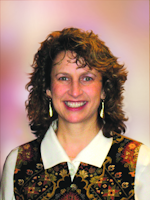Phototherapy: Brain photobiomodulation makes initial steps
Photobiomodulation (PBM) is a well-established method of stimulating mitochondrial activity with light. Now, researchers are working to use PBM to modify brain activity with the hope of developing clinically valuable tools to address neurological decline.
The argument for a physiological effect of PBM (also known as low-level light therapy) is fairly clear. Direct light absorption by cytochrome C oxidase within cellular mitochondria increases metabolic activity, presumably enhancing the function of the absorbing cells, whatever that function happens to be. Other mechanisms involve photosensitive receptors and channel transporters on the cell membrane as well as activation of latent growth factors outside the cell.
Several teams are working to identify the effects of PBM on brain activity in both humans and animal models. A few recent results illustrate the promise that PBM could eventually become a clinically relevant therapy to address cognitive dysfunction.
Investigating cognitive effects
Mental flexibility is one of the cognitive categories that declines with various degenerative conditions. María Banqueri and her colleagues at the University of Oviedo (Oviedo, Spain) investigated the ability of PBM to restore cognitive flexibility on stressed mice.1 The team induced cognitive impairment by separating infant mice from their mothers for four hours a day during their first 10 days. After the mice were mature, they were trained in the Morris Water Maze, where an “escape platform” is placed in one quadrant. Trained mice spend much more time in the quadrant containing the escape platform.
To measure cognitive flexibility, the researchers changed the location of the escape platform. Unimpaired mice quickly adapt, spending significantly more time in the quadrant with the relocated escape platform. Impaired mice don’t modify their behavior as much as unimpaired mice. Banqueri wanted to determine if cognitive flexibility could be restored with PBM.
She exposed a group of impaired mice to cycles of 1064 nm radiation: 20 seconds on and 40 seconds off for one hour. For five days, the impaired mice received that treatment—four days of maze training followed by evaluation on the relocated escape platform. The impaired mice recovered their mental flexibility.
In addition, the team performed histological analysis on the brains of various control and treatment groups. Cytochrome oxidase levels, which were expected to decrease with light exposure, indeed were lower in the impaired mice that received PBM, although the levels varied across different regions of the brain.
The human factor
The case for the effect of PBM on human brain activity is more challenging. Not only is human cognition significantly more complex, the human skull is so thick that light cannot penetrate deeply within the brain tissue. Recent research investigated the effects of two separate PBM devices.
Gerhard Litscher of the Medical University of Graz (Graz, Austria) evaluated the effects of the photobiomodulation helmet from Shenzhen Guangyang Zhongkang Technology (Shenzhen City, China).2 The PBM helmet contains 256 60 mW, 810 nm LEDs for a total output power of about 15 W (see figure). Using the differential signal from 730 and 805 nm radiation measured at two different locations, Litscher recorded the regional cerebral oxygen saturation in three conditions: 20 minutes in a resting state, 15 minutes of light stimulation, and an additional 20 minutes resting.
He found that blood oxygenation increased during PBM then dropped down after PBM, but to a level higher than the initial state. Although Litscher is convinced that PBM modulates blood oxygenation, he recognizes there are many remaining questions. Ideally, PBM can be used to treat specific conditions, but the power density, the duration of exposure, the frequency of the light, and other parameters are all undetermined. Litscher summarized, “We have to perform more basic investigations before the clinical use of the helmet starts.”
Reza Zomorrodi, a researcher at the Centre for Addiction and Mental Health (Toronto, ON, Canada), investigated the effects of light stimulation from the Vielight portable PBM apparatus.3 The Vielight device includes both a nasal applicator and a headset with four 810 nm LED modules. Twenty healthy subjects between 61 and 74 years old received either a sham stimulation or 20 minutes of exposure to 40 Hz pulsed light. After a one-week washout period, the subjects all received the opposite treatment. Zomorrodi monitored brain activity with an EEG.
The subjects receiving light therapy demonstrated increases in the power of alpha, beta, and gamma waves, and decreases in lower-frequency delta and theta waves. This is particularly interesting because Alzheimer’s disease is characterized by synchrony in brain waves, and PBM may be able to modify those frequencies. Research is in its early stages, but Zomorrodi noted, “This is the first double-blind study to demonstrate the modulations of cortical oscillation via transcranial PBM. Although the exact mechanism is unknown, the modified brain waves were significantly different from placebo.”
REFERENCES
1. M. Banqueri, Brain Res., 1720, 146300 (2019).
2. G. Litscher, Medicines, 6, 11 (2019); doi:10.3390/medicines6010011.
3. R. Zomorrodi, Sci. Rep., 9, 6309 (2019).

Barbara Gefvert | Editor-in-Chief, BioOptics World (2008-2020)
Barbara G. Gefvert has been a science and technology editor and writer since 1987, and served as editor in chief on multiple publications, including Sensors magazine for nearly a decade.
